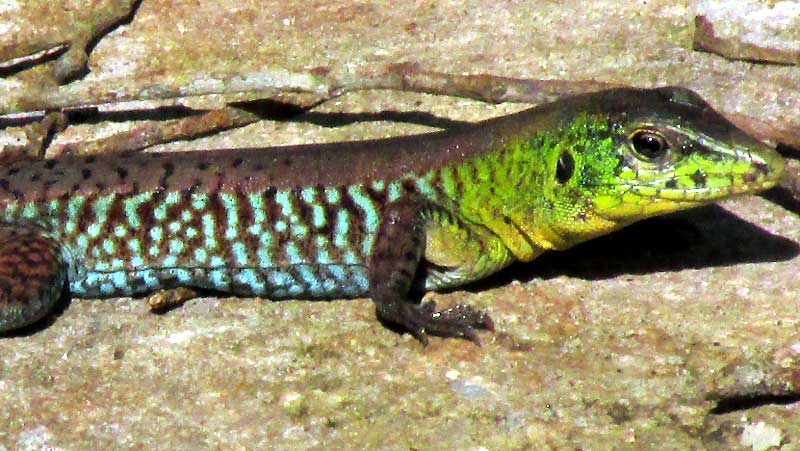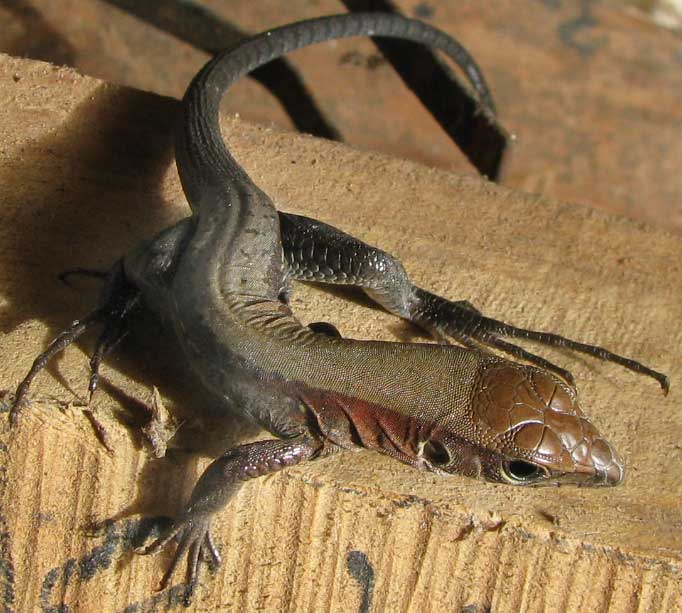Excerpts from Jim Conrad's
Naturalist Newsletter
issued on September 10, 2019 from near the forest just west of Tepakán; elev. ~9m (~30 ft), N21.053°, W89.052°; north-central Yucatán state, MÉXICO
RAINBOW AMEIVA LIZARD

Above, that's a Rainbow Ameiva, HOLCOSUS UNDULATUS, crossing the concrete floor of the hut's outside kitchen. Below is a close-up of the lizard's front part:

Rainbow Ameivas are common here. Twice I've encountered mating individuals, but didn't have my camera ready. Ameivas are members of the Whiptail Family, the Teiidae. More info on the species is provided below.
from the November 28, 2010 Newsletter issued from Hacienda Chichen Resort beside Chichén Itzá Ruins, central Yucatán, MÉXICO; limestone bedrock, elevation ~39m (~128ft), ~N20.676°, ~W88.569°
RAINBOW AMEIVA WITH NO RAINBOW
Though I've been at the Hacienda for over a year, somehow new things just keep popping up. That was the case this week when I retrieved a wheelbarrow leaning against the tool shed's wall and met the critter shown below.

Notice how the head scales are large and shiny but immediately behind those big scales are unusually tiny ones. In reptile identification, coloring and patterning is much less important than scale configuration, and this little critter had a scale pattern unlike any other I'd seen here.
With Jonathan Campbell's Amphibians and Reptiles of Northern Guatemala, the Yucatán, and Belize it was easy to figure out that this was a female or maybe juvenile Rainbow Ameiva, HOLCOSUS UNDULATUS, a member of the Ameiva and Whiptail Family, the Teiidae. Field marks for that family include the long, pointed snout, the head distinct from the neck, and those large, flat, platelike scales on the head contrasting with the tiny, granular scales behind.
The male looks very different. Several times I've seen one cross the open space before the hut, but he always disappeared before I could get my camera out. Males are much larger than females, reaching about 20 inches (50 cm) long, and the sides of their brown bodies are prettily adorned with irregular, alternating, vertical, chestnut and turquoise bars. The breeding male's throat, or "gular area," is brightly red- orange.
Campbell reports that the species occurs in a wide variety of habitats but is most common at forest edges or clearings. Mostly it eats insects, and several common snake species eat it.
Rainbow Ameivas, also sometimes called Metallic Ameivas, are distributed from Mexico to Costa Rica.